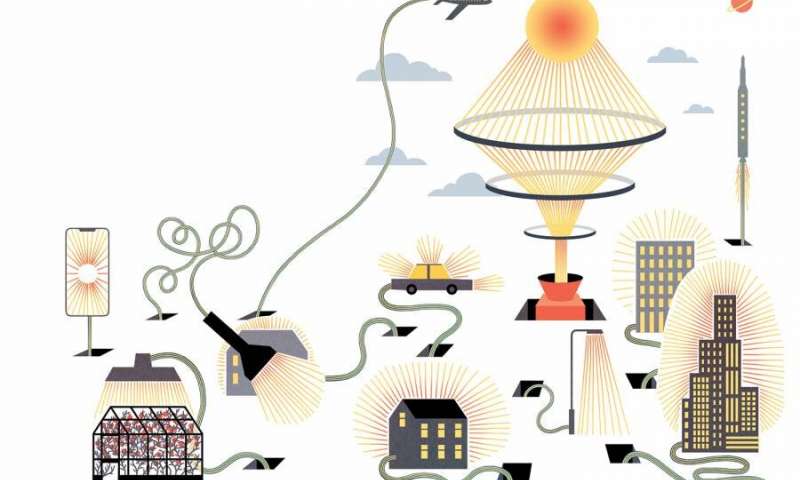
Susanna Thon, a Johns Hopkins assistant professor of electrical and computer engineering, is working to develop solar cells that marry affordability and efficiency. "If you want to install solar farms in cities, which is where we actually need power, you would love to be able to use these really high-efficiency technologies because that would reduce the amount of the area that you need to generate a reasonable amount of power. But they're just too expensive," Thon says. "And you can't use the cheapest materials, because they just don't work that well at large scale."
A few years ago, Thon had an idea to develop cost-effective, scalable solar concentrators specifically for these newer models of solar cells. Traditional solar concentrators use big lenses and mirrors to collect large amounts of light and focus them down onto a smaller area. Thon and her team took that concept, swapped the heavy mirrors for a light silicon-containing plastic, and shrank the concentrators down to a sleek one-inch square. "We miniaturized the whole design," she says. Using a microconcentrator, Thon says, solar cells can absorb more light and increase power output by up to 20 times—or more depending on the specific application.
The team 3-D-printed molds for microconcentrator lens arrays—grids of these tiny concentrators—then crafted lenses out of a flexible silicone polymer. The result is a thin, transparent sheet of bumps resembling the shape of an inverted egg carton that can be bonded on top of solar cells.
These compact concentrators could be cheaply and easily scaled to cover a larger area, Thon says, making them promising for commercial use.
Thon and her team filed a patent for their initial design, and now they're working to improve the technology to better collect both direct and indirect sunlight. "There's lots of light out there from the sun that gets scattered off of clouds or off of buildings, or you might want to mount a solar cell on the side of a building, where it's not going to be pointed directly at the sun at all times," she says.